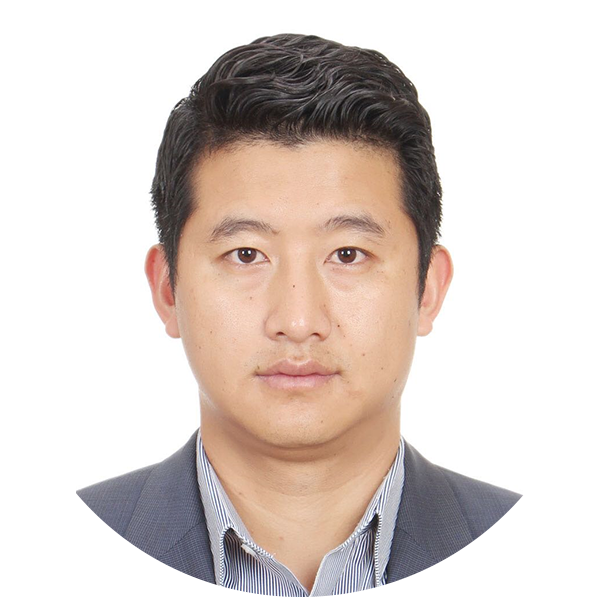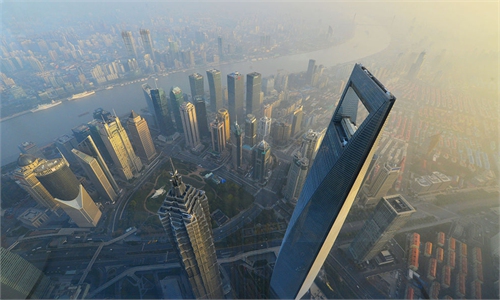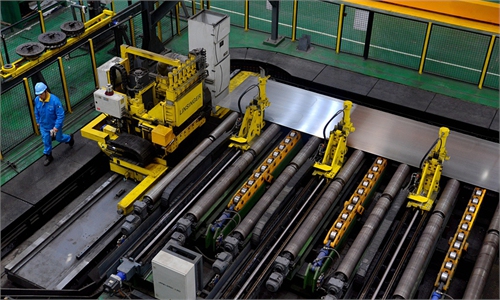China emphasizes rooting out economic risks on high-tech, industrial chains and food safety at key meeting
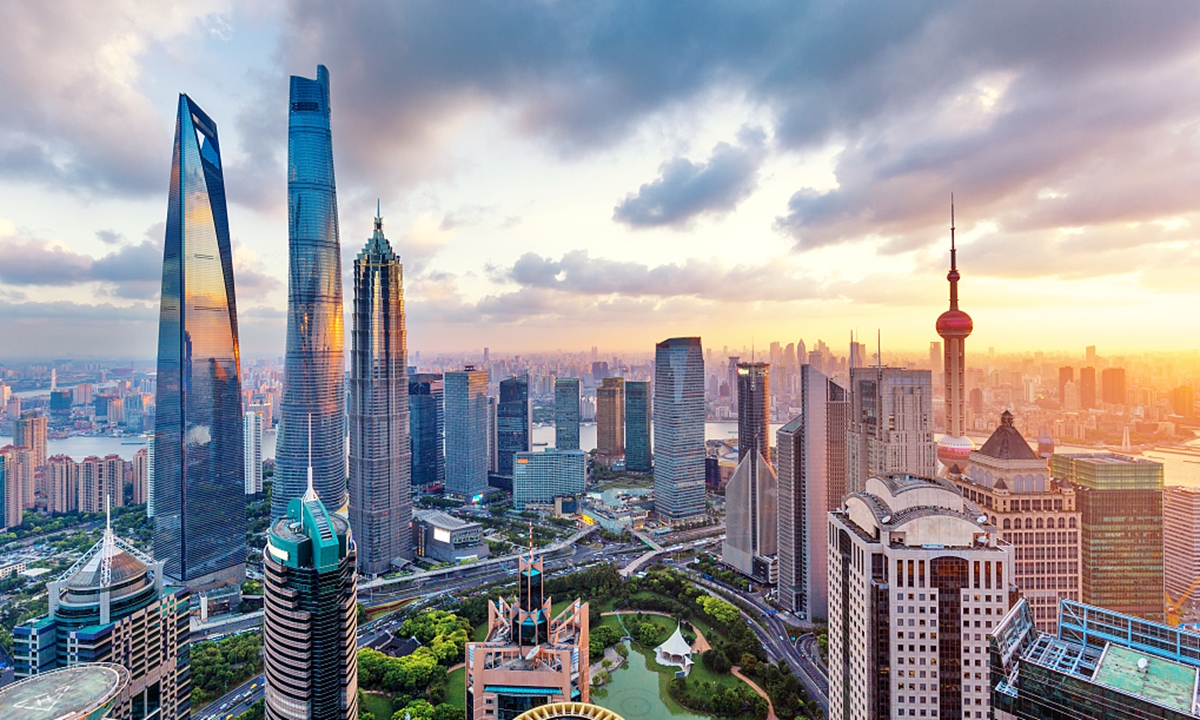
Lujiazui Photo:VCG
Top Chinese policymakers on Friday put heavy emphasis on addressing various internal challenges ranging from consumption, technology and financial security at a key meeting that outlines top policy priorities for 2021, signaling the world's second-largest economy is shifting reliance on the domestic economy as external risks continue to mount marked by the COVID-19 pandemic and trade tensions.
At the closely watched Central Economic Work Conference, attended by Chinese President Xi Jinping and other senior officials, top leaders commended "historic" achievements in the battle against the COVID-19 epidemic, while concluding the Chinese economy continues to face many uncertainties from the external environment, not-so-solid recovery conditions and various risks posed by the pandemic.
The focus on strengthening the domestic economy and indigenous technological innovation is the answer to internal and external challenges, and the recent steady recovery in the Chinese economy and promising prospects for growth in 2021 offered sufficient room for policymakers to address these challenges to ensure long-term high-quality growth, analysts said.
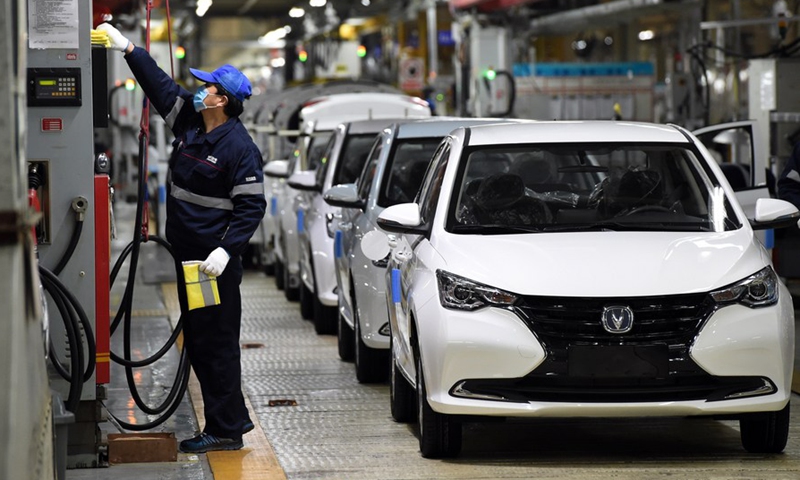
A man works at a workshop of Hefei plant of Changan Automobile in High-tech Industry Development Zone in Hefei, east China's Anhui Province, Feb. 26, 2020.File photo:Xinhua
Internal focus
In line with a long-standing tradition, the meeting from Wednesday to Friday was held in Beijing, underscoring the steadiness in China's policy-making process in stark contrast to a chaotic world facing a raging COVID-19 pandemic.
The meeting often provides a rare window for domestic and global markets into the Chinese leadership's reading of the world's second-largest economy as well as policy priorities for the coming year. This year's meeting has greater significance, as 2021 will mark a critical inflection point for the Chinese economy, when China seeks to further consolidate its steady recovery from the COVID-19 pandemic, start the 14th Five-Year Plan (2021-25) and embark on its next centennial goal of building a modern socialist power.

A customer selects drinks at a supermarket in Guiyang, southwest China's Guizhou Province, Sept. 16, 2020.Photo:Xinhua
At the meeting, top policymakers concluded that facing severe and complex international situations, daunting domestic reform and development tasks, particularly with the impact of the COVID-19 pandemic, China maintained strategic focus and made an accurate judgment and decisive actions that produced a "historic" outcome.
However, the meeting also pointed out that there remains uncertainties in the pandemic and internal environment, and the conditions for China's economic recovery are not as solid, adding that many risks are not to be neglected, calling for thoroughly preventing various risks and challenges.
In line with expectations, the meeting stressed the overall theme of forming the widely discussed "dual circulation" development paradigm that puts heavy emphasis on the massive domestic market to ensure long-term high-quality growth. Under that overarching theme, the meeting outlined efforts in eight areas of priorities.
Among the areas are efforts to bolster the country's strategic technology capability to address major challenges that hamstring the country's development and security. Despite an escalating technological war launched by the US, the meeting called for international cooperation in technological research and development.
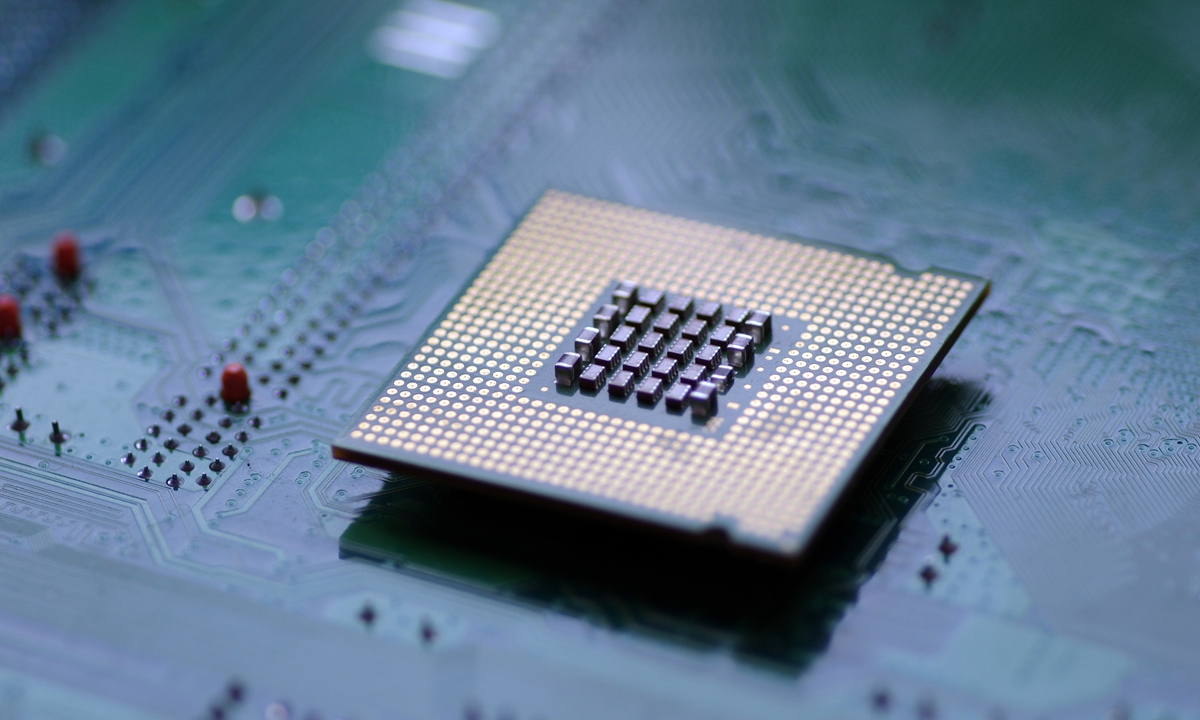
chip Photo:VCG
In what appears to be a more targeted move, the meeting also called for efforts to make breakthroughs in core technologies to resolve "stranglehold" problems in various areas, as part of a push to build independent and controllable supply chains. Also related to ensuring an independent supply chain, the meeting called for efforts to address issues regarding seeds and land to ensure steady food supply.
In line with the overall focus on the domestic market, the meeting also called for a series of efforts, including job creation and improvements to the social security net, to expand domestic demand.
"The most important theme could be the Chinese government's focus on reforms on the demand side in the next five years" to boost domestic demand, Wei Jianguo, former Chinese vice minister of commerce and executive deputy director of the China Center for International Economic Exchanges, told the Global Times, adding that bolstering the internal economy would help address domestic and foreign risks.
"As the pandemic revealed, China's reliance on the world is decreasing, while the world's reliance on China is increasing. So we have to further build on that and significantly boost our domestic economy to cope with any potential risks," Wei said.
Part of the priority to root out domestic risks, the meeting also stressed the need to strengthen anti-trust regulations to prevent "disorderly expansion of capital," signaling tightening regulations for the financial technology sector.
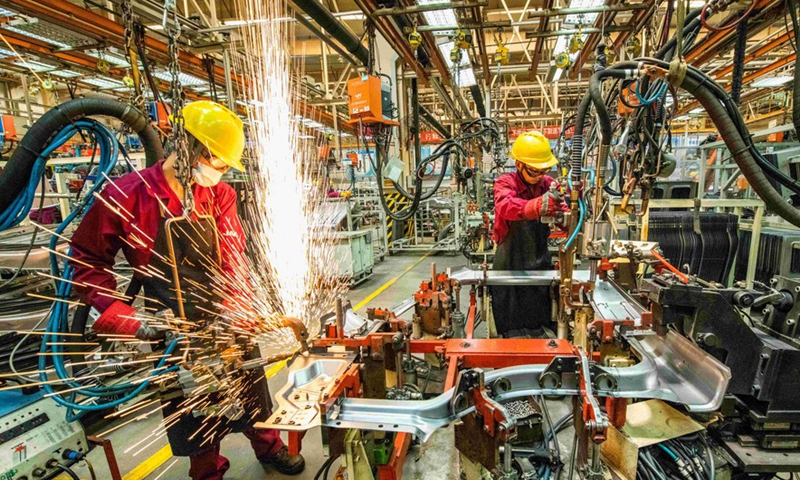
Workers weld at a workshop of an automobile manufacturing enterprise in Qingzhou City, east China's Shandong Province, June 30, 2020.File photo:Xinhua
Sufficient room
A closely watched item from the Central Economic Work Conference was clues into the officials' target for growth pace for the coming year. In line with recent adjustments, the meeting did not offer any indication of a specific target next year by only calling for striving to maintain economic operations at "reasonable range."
"I don't think there will be any mention of a specific growth target this year. Rather, it will stick to stabilizing six areas," Li Chang'an, a professor at the University of International Business and Economics' School of Public Administration, told the Global Times, referring to officials' stated goals of stabilizing the jobs market, financial market, trade, foreign capital, investment and expectations. "Without a specific target, there would be more focus on coordinating policies and addressing other long-term issues."
Still, analysts said that major efforts could be put in place to ensure relatively high-speed growth in 2021 to start the first year of the 14th Five-Year Plan on strong footing. Coming on the heels of what officials call a "strategic victory" over the virus and steady recovery, the Chinese economy is expected to grow at around 2 percent in 2020 and about 8 percent in 2021, taking the global lead, according to various projections.
That would also offer Chinese policymakers sufficient room to make major policy shifts to address risks to the domestic economy, analysts noted.
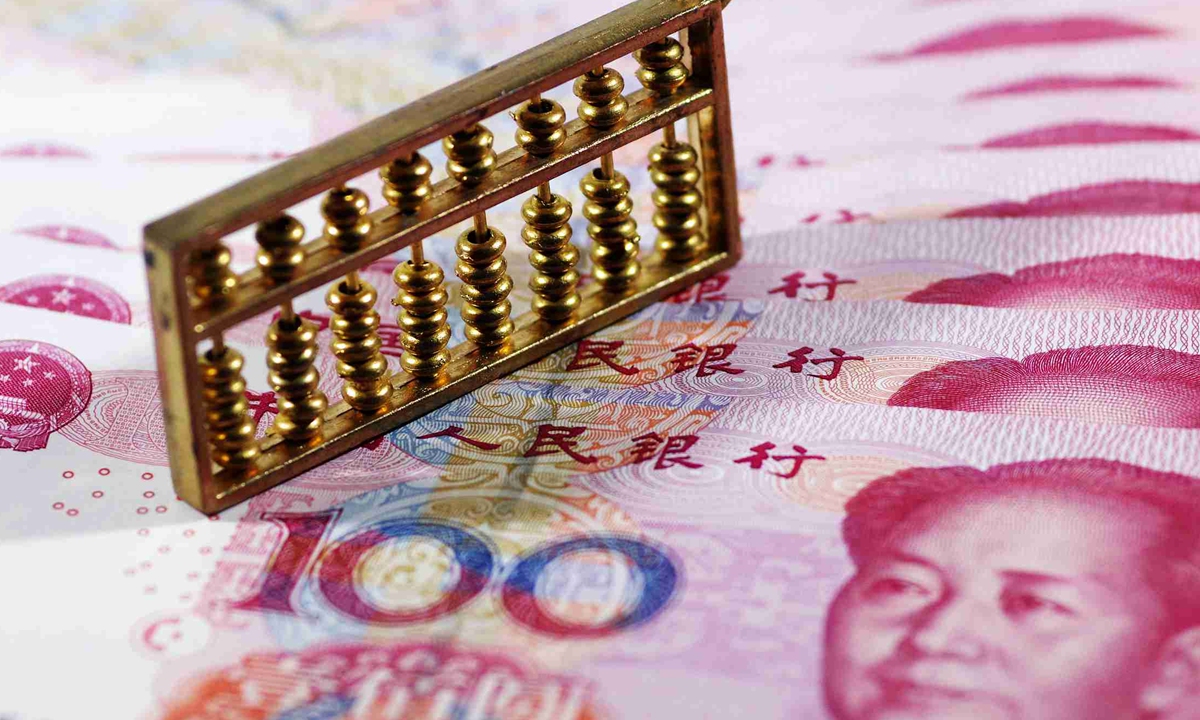
File photo:VCG
Among the most pressing issues to be addressed in 2021 could be mounting government and corporate debt, according to Tian Yun, vice director of the Beijing Economic Operation Association. "The leverage ratio has increased so fast that it poses a huge risk," Tian told the Global Times, noting that the leverage ratio has reached the level in the aftermath of the global financial crisis in 2009. "So, deleveraging will be a priority for next year's economic work."
Another sign of China's determination to address long-term challenges, the meeting also called for better efforts to ensure China reach its goal of peaking carbon dioxide emissions by 2030 and reach carbon neutrality by 2060. Housing, which has been a focus in recent years' meetings, also remained one of the top priorities, as top officials signaled a continued crackdown on speculation in the real estate market.
"Overall, 2021 will be a tough year with a combination of old and new challenges. The most important goal is to consolidate the success in the recovery from the COVID-19, while taking structural reforms to address long-term issues," Tian said.
